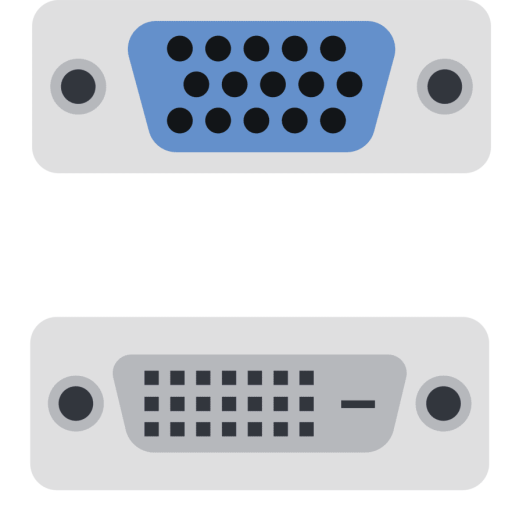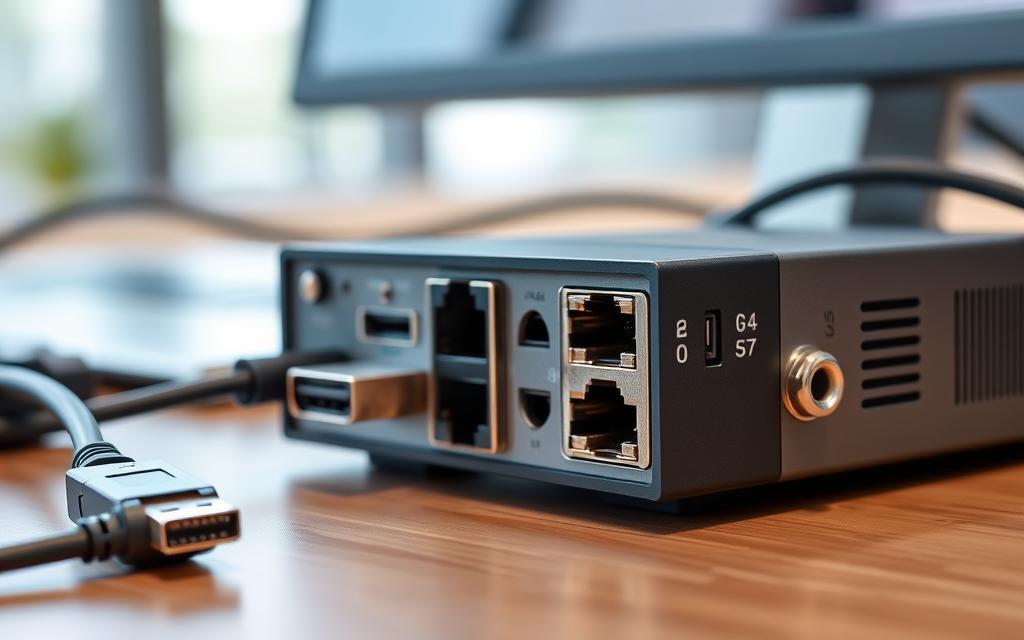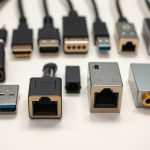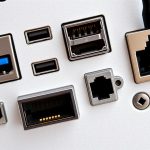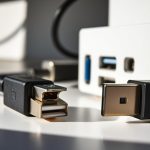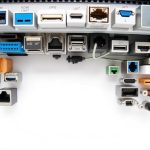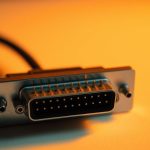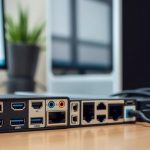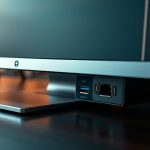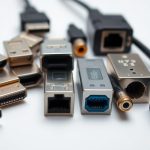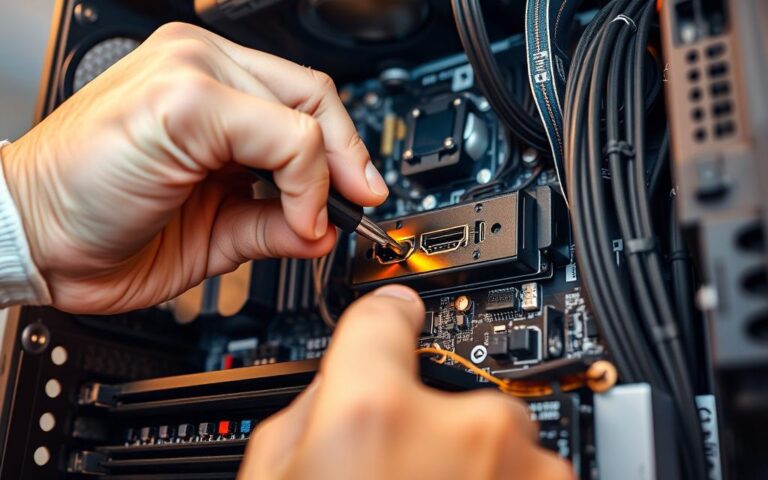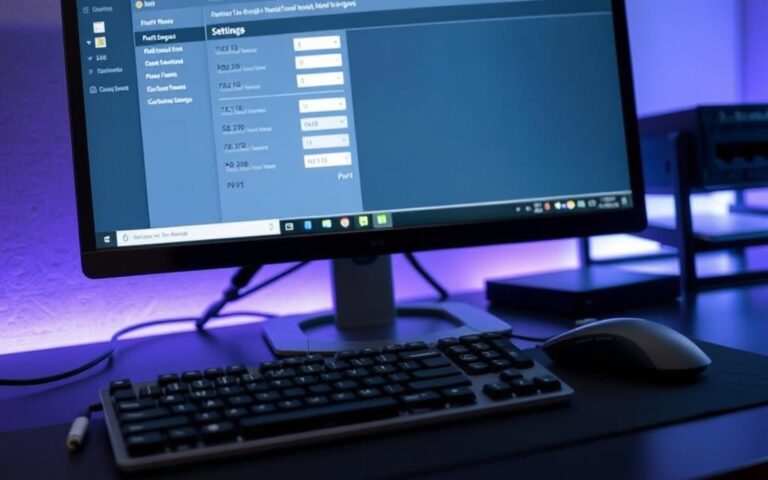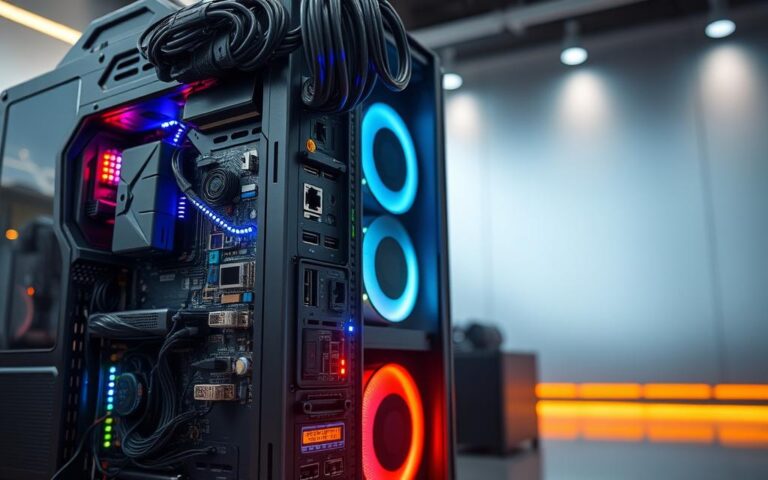Learn How Do Computer Ports Work for Better Connectivity
Effective connectivity is crucial in today’s digital landscape. At the heart of this connectivity are computer ports, which enable data exchange between devices and networks.
Understanding how these ports function is vital for both beginners and those looking to deepen their knowledge of network communications. Whether it’s a physical hardware port or a virtual port used for communication, these gateways facilitate the exchange of information.
By grasping the fundamentals of port functionality, individuals can better troubleshoot connection issues and optimize their network capabilities. This guide aims to break down complex technical concepts into accessible explanations.
Understanding Computer Ports: The Gateway to Connectivity
Computer ports are the backbone of modern computing, enabling various devices to connect and communicate. A desktop computer port is an interface or point of connection where you can plug in an external device such as a printer, mouse, keyboard, or USB drive.
What Are Computer Ports?
Computer ports can be defined as physical and virtual interfaces that enable data exchange between a computer and external devices or networks. There are two primary types of ports: hardware ports, which are physical connectors on your computer, and software ports, which are virtual endpoints for network communication.
Why Ports Matter in Modern Computing
Ports serve as essential gateways that allow multiple types of connections to function simultaneously on a single computer. They enable everything from basic peripheral connections to complex network communications. As Mark Dean, a computer scientist and engineer, once noted, “The development of computer ports has been instrumental in making computers more accessible and user-friendly.”
“The way to get started is to quit talking and begin doing.” –
To illustrate the different types of ports and their uses, consider the following table:
| Port Type | Description | Common Uses |
|---|---|---|
| USB Port | A standard interface for connecting peripherals | Flash drives, keyboards, mice |
| Network Port | A virtual endpoint for network communication | TCP/IP connections, network services |
| Video Port | A connector for display devices | Monitors, projectors |
Understanding computer ports is crucial for appreciating how devices interact and how data is transferred. By recognizing the different types of ports and their functions, users can better utilize their computer’s capabilities.
Physical vs. Network Ports: Two Sides of the Same Coin
Understanding the distinction between physical and network ports is vital for grasping how computers communicate with each other and with peripherals. In computer networking, a port is an array of communication, represented by a 16-bit unsigned integer number ranging from 1 to 65535.
Hardware Ports: The Physical Connections
Hardware ports provide tangible connection points for peripherals and external devices on desktop computers and laptops. Common examples include USB ports, HDMI ports, and Ethernet ports. These physical ports enable users to connect a wide range of devices, from keyboards and mice to monitors and external hard drives.
Network Ports: The Virtual Endpoints
Network ports, on the other hand, function as virtual endpoints that allow computers to communicate over networks using specific protocols and port numbers. For instance, HTTP typically uses port 80, while HTTPS uses port 443. These virtual ports are crucial for facilitating communication between devices over a network.
| Port Type | Description | Examples |
|---|---|---|
| Physical Ports | Tangible connection points for peripherals and external devices | USB, HDMI, Ethernet |
| Network Ports | Virtual endpoints for network communication | HTTP (80), HTTPS (443), FTP (21) |
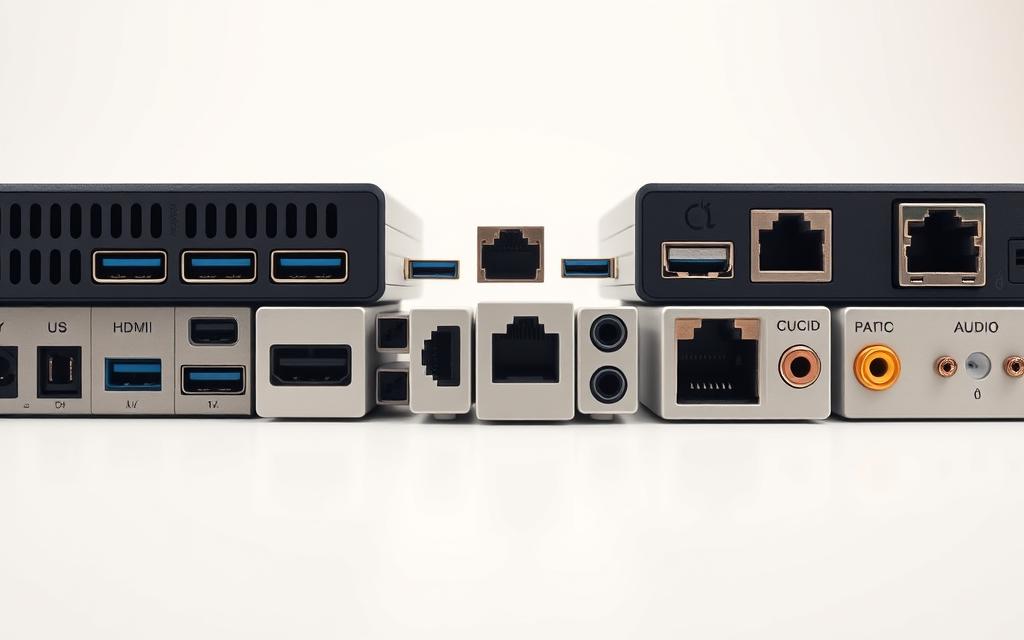
In summary, physical and network ports work together to enable seamless connectivity in modern computing environments. While hardware ports provide the physical connections, network ports facilitate communication over networks.
How Do Computer Ports Work: The Technical Breakdown
Ports play a vital role in facilitating communication between peripherals, computers, and network services. The process involves both physical and network ports working in tandem to enable data transfer.
Data Transmission Through Ports
Data transmission through ports involves the operating system managing port assignments and directing data traffic to the appropriate applications or hardware components. This process is fundamental to how computers communicate with peripherals and network services.
The Role of Ports in Computer Communication
Ports are essential for communication in the network context, with every network communication requiring an IP address and a port number. The IP address identifies the computer on the network, while the port number identifies the specific service or application on that computer, facilitating precise data transfer.
Common Physical Ports on Desktop Computers
The versatility of a desktop computer is significantly enhanced by the range of ports it offers. Having multiple types of ports on your desktop computer allows you to connect various devices, enhancing its functionality.
USB Ports and Their Variations
USB ports are among the most commonly used ports on desktop computers. They come in different versions, including USB 2.0, USB 3.0, and the newer USB Type-C. Each version offers different data transfer speeds, with USB 3.0 and USB Type-C providing significantly faster transfer rates than USB 2.0. USB Type-C is particularly versatile, supporting both data transfer and display output.
Video and Audio Ports
For connecting monitors, TVs, and audio equipment, desktop computers often feature various video and audio ports. Common video ports include HDMI and DisplayPort, which support high-definition video output. For audio, the 3.5mm audio jack is ubiquitous, while some systems may also include higher-quality audio ports.
Network and Peripheral Ports
For networking, the Ethernet port is crucial for establishing a wired internet connection, offering reliability and speed. Other peripheral ports may include specialized connectors for specific devices, enhancing the computer’s connectivity options.
Understanding these ports and their uses can help you make better decisions about connecting devices to your desktop computer. The variety of ports available on modern desktops makes them highly adaptable to different user needs.
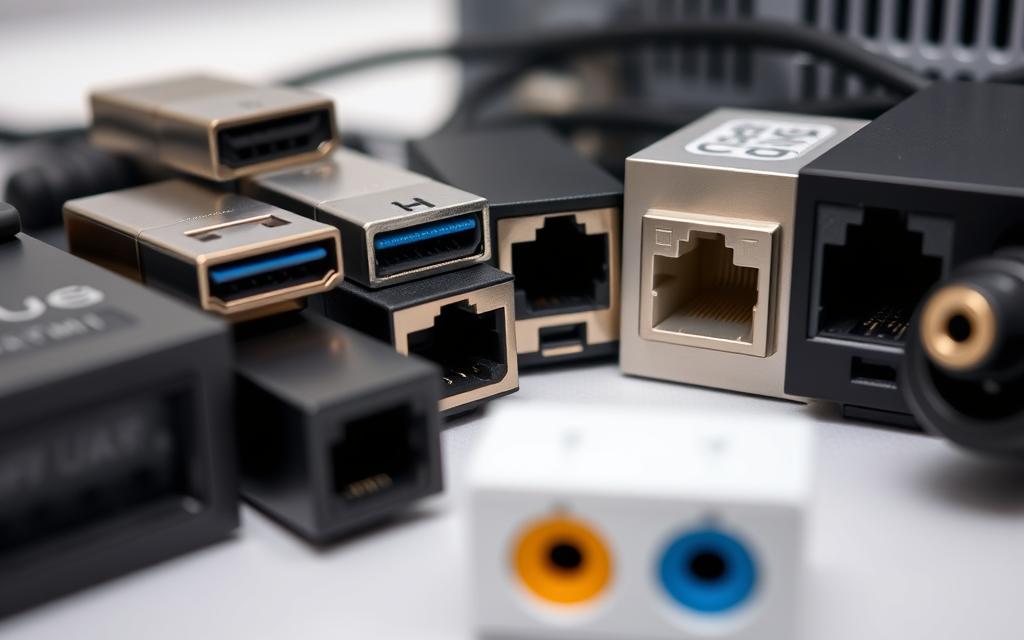
Network Port Fundamentals: TCP and UDP Explained
In the realm of computer networking, TCP and UDP play pivotal roles in data transmission. Network ports are essential for facilitating communication between devices, and understanding the protocols that govern this communication is crucial.
Transmission Control Protocol (TCP)
TCP is a connection-oriented protocol that ensures reliable data transfer between devices. It establishes a direct connection between the sender and receiver, guaranteeing that data packets are delivered accurately and in the correct order.
User Datagram Protocol (UDP)
UDP, on the other hand, is a connectionless protocol that prioritizes speed over reliability. It transmits data packets without establishing a dedicated connection, which can result in faster transmission but may lead to packet loss or corruption.
When to Use TCP vs. UDP
The choice between TCP and UDP depends on the specific requirements of the application or service. TCP is suitable for applications that require guaranteed delivery, such as file transfers and email. UDP is ideal for applications that prioritize speed, such as online gaming and video streaming.
| Protocol | Reliability | Speed | Use Cases |
|---|---|---|---|
| TCP | High | Variable | File transfers, email, web browsing |
| UDP | Low | High | Online gaming, video streaming, VoIP |

Understanding the differences between TCP and UDP is essential for designing and implementing efficient network communications. By choosing the appropriate protocol, developers can optimize their applications for reliability, speed, or a balance between both.
Port Numbers: The Digital Address System
Port numbers act as a digital roadmap, guiding data to the correct destinations within a computer network. This digital addressing system is crucial for ensuring that data packets are delivered to the right applications and services running on a computer.
Functionality of Port Numbers
Port numbers are used by the transport layer protocols, such as TCP and UDP, to identify the source and destination ports of a connection. The Internet Assigned Numbers Authority (IANA) is responsible for assigning port numbers. The use of port numbers enables multiple applications to share the same network connection, enhancing the efficiency of data communication.
Port Number Ranges and Categories
Port numbers are categorized into three main ranges:
- Well-known ports (0-1023): These are designated for general and specialized services, such as HTTP (port 80) and HTTPS (port 443).
- Registered ports (1024-49151): These are used by applications that are not as common, providing a broader range for software developers.
- Dynamic or private ports (49152-65535): Also known as ephemeral ports, these are used for temporary connections.
| Port Category | Port Range | Description |
|---|---|---|
| Well-known ports | 0-1023 | Used for common services like HTTP and HTTPS |
| Registered ports | 1024-49151 | Assigned to less common applications |
| Dynamic/Private ports | 49152-65535 | Used for temporary or ephemeral connections |
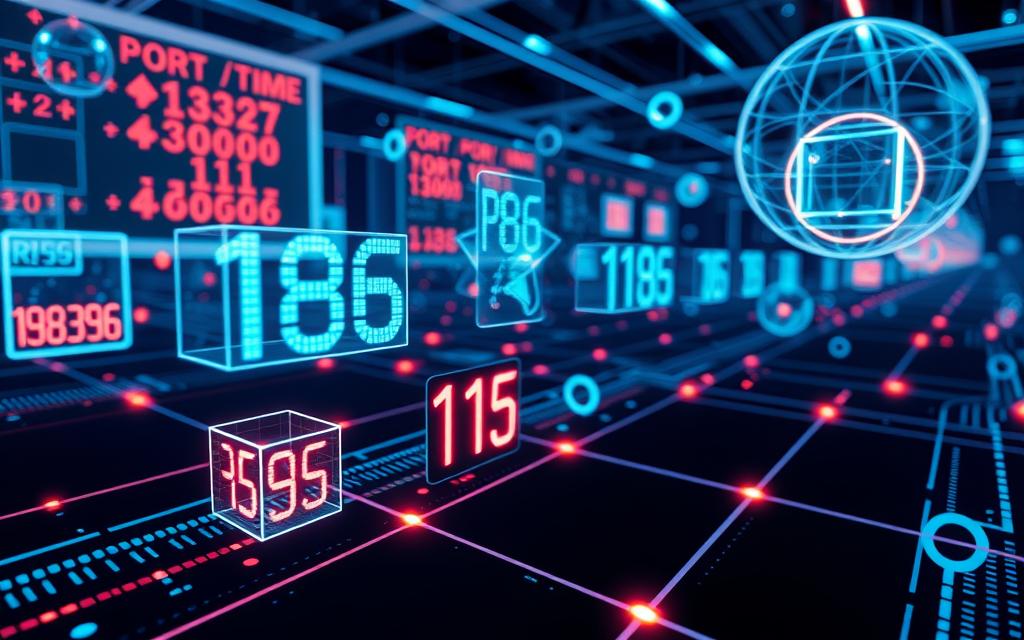
The categorization of port numbers helps in organizing network traffic and standardizing communication protocols. By understanding these categories, users can better comprehend how computers manage multiple network connections and route data appropriately.
Essential Port Numbers Every Computer User Should Know
Understanding the essential port numbers is crucial for every computer user to navigate the digital world effectively. These port numbers facilitate various internet activities, including web browsing, email communication, and file transfer.
Web Browsing Ports
For web browsing, two critical ports are used: Port 80 for HTTP (Hypertext Transfer Protocol) and Port 443 for HTTPS (HTTP Secure). HTTP is the standard protocol for accessing websites, while HTTPS ensures encrypted communication, especially important for secure transactions.
Email and Communication Ports
Email services rely on specific ports for sending and receiving emails. Port 25 is used for SMTP (Simple Mail Transfer Protocol) to send emails between mail servers. Additionally, Port 110 (POP3) and Port 143 (IMAP) are used for retrieving emails.
| Port Number | Protocol | Description |
|---|---|---|
| 80 | HTTP | Standard port for unencrypted websites |
| 443 | HTTPS | Encrypted web communication |
| 25 | SMTP | Sending emails between mail servers |
File Transfer and Remote Access Ports
For file transfer, Port 20/21 is used for FTP (File Transfer Protocol). Remote access is facilitated through ports like Port 22 for SSH (Secure Shell) and Port 3389 for RDP (Remote Desktop Protocol).
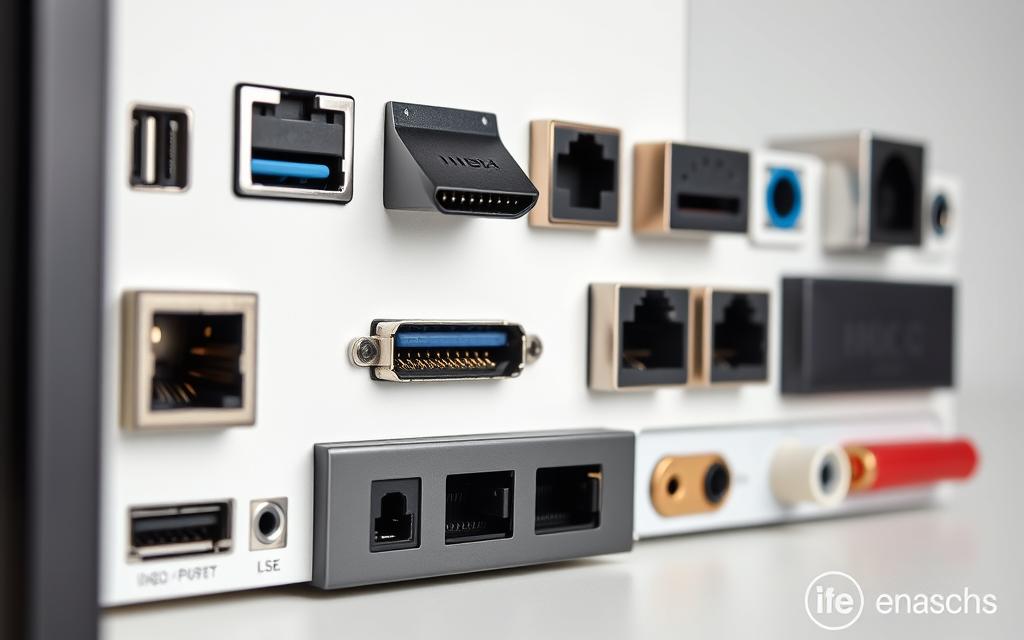
Data Transfer Speeds: How Different Ports Perform
Different ports on a computer support varying data transfer speeds, impacting overall system performance. Understanding these differences is crucial for optimizing device connectivity and ensuring efficient data exchange.
USB Speed Comparisons
USB ports have evolved significantly, with each generation offering improved data transfer rates. For instance, USB 2.0 has a maximum transfer speed of 480 Mbps, while USB 3.0 can reach up to 5 Gbps. The latest USB 3.2 generation further boosts speeds to 20 Gbps. These advancements significantly reduce file transfer times and enhance device performance.
Network Port Speeds
Network ports, such as Ethernet, offer high-speed connectivity for internet and local network access. Standard Ethernet supports up to 100 Mbps, while Gigabit Ethernet provides 1 Gbps, and 10 Gigabit Ethernet reaches 10 Gbps. These varying speeds impact internet and local network performance, making it essential to choose the right network port for specific tasks.
Video Port Bandwidth
Video ports like HDMI and DisplayPort also have distinct bandwidth capabilities. HDMI 2.0 supports up to 18 Gbps, while DisplayPort 1.4 can handle 32.4 Gbps. These differences affect the supported resolutions and refresh rates, influencing the overall visual experience.
By understanding the data transfer speeds of various ports, users can make informed decisions about which ports to use for specific tasks, optimizing their computer’s performance and connectivity.
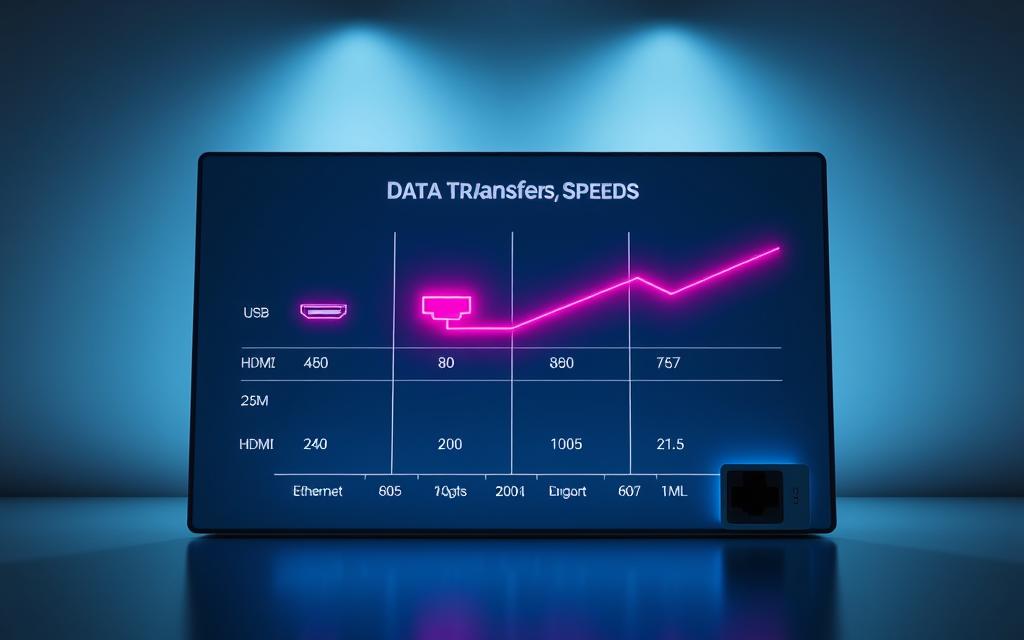
Port Security: Protecting Your Digital Gateways
Securing computer ports is a critical aspect of protecting our networks and systems from cyber threats. By controlling access to certain ports, administrators can significantly enhance network security.
Common Port Vulnerabilities
Certain ports are frequently targeted by malicious actors due to their association with critical services. For instance, TCP Port 445 has been identified as a serious concern for enterprise security managers, as increased sniffing detected on this port may indicate an impending mass malicious-code attack, according to Gartner.
Commonly exploited ports include those used for web browsing (HTTP, HTTPS), email, and file transfer. Attackers often use these ports to launch various types of cyber attacks, including malware distribution and unauthorized data access.
Best Practices for Port Security
To protect against these threats, several best practices can be implemented:
- Close unnecessary ports to reduce the attack surface.
- Use encrypted connections, such as HTTPS on port 443, to secure data transmission.
- Implement proper authentication mechanisms to control access to sensitive services.
- Utilize firewalls to filter traffic and block unauthorized access attempts to specific ports.
By adopting these measures, individuals and organizations can significantly improve their port security posture.
| Port Number | Service | Security Measure |
|---|---|---|
| 443 | HTTPS | Use encrypted connections |
| 445 | SMB | Block unnecessary access, use firewalls |
| 80 | HTTP | Redirect to HTTPS, use secure protocols |
By understanding and managing port vulnerabilities, we can better protect our systems from network-based threats.
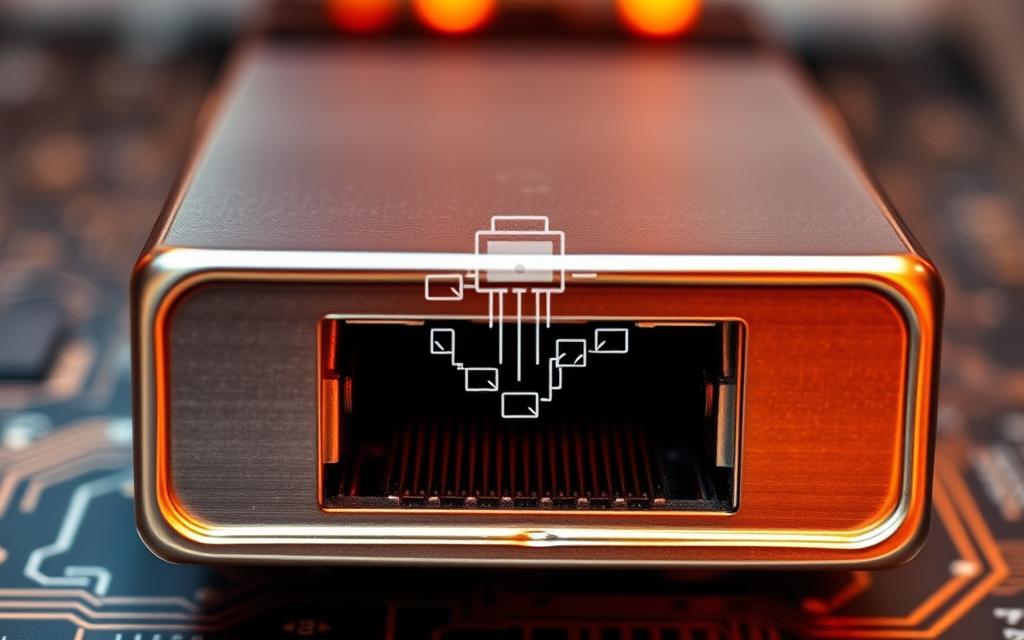
Expanding Your Computer’s Port Capabilities
When your computer’s built-in ports are insufficient, there are several ways to expand its connectivity options. This is particularly useful for desktop computers where the need to connect multiple devices is common.
USB Hubs and Port Multipliers
One simple method to increase the number of ports is by using a USB hub. These hubs can provide additional USB ports, allowing you to connect more devices such as flash drives, keyboards, and mice. However, it’s essential to consider the power requirements and potential bandwidth limitations when using USB hubs.
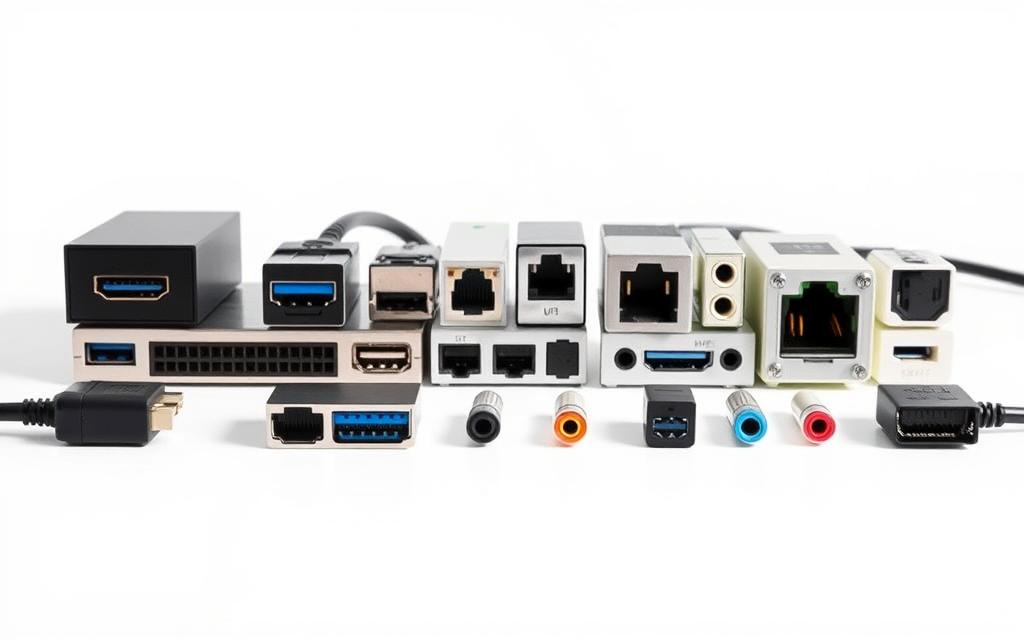
Expansion Cards and Adapters
Another approach is to use expansion cards or adapters that can add new types of ports to your desktop computer or laptop. For example, PCIe cards can add HDMI, Ethernet, or specialized ports like FireWire. When choosing an expansion solution, consider factors such as compatibility and power requirements to ensure seamless connectivity.
- USB hubs for additional USB ports
- Expansion cards for new port types
- Considerations for choosing the right expansion solution
Troubleshooting Port-Related Issues
Troubleshooting port-related issues is crucial for maintaining seamless connections between devices and ensuring that data transfer occurs smoothly.
Physical Port Problems
Physical port issues can arise due to damaged connectors, loose connections, or compatibility problems with devices and cables. For instance, a damaged USB port can prevent a device from being recognized by the computer. To resolve such issues, users can try using a different port or replacing the damaged cable.
According to a Microsoft support article, USB ports may stop working after removing or inserting a USB, which can be caused by a faulty USB hub or an issue with the USB driver.
| Issue | Cause | Solution |
|---|---|---|
| Damaged Connector | Physical damage to the port or cable | Replace the damaged cable or port |
| Loose Connection | Poor connection between devices | Secure the connection or try a different port |
Network Port Connectivity Issues
Network port connectivity issues can occur due to blocked ports, firewall restrictions, or protocol conflicts. For example, a firewall may block a specific port required by an application, preventing it from functioning correctly. To resolve such issues, users can configure their firewall settings to allow the required port or adjust the application’s settings to use a different port.
“Firewalls are designed to block unauthorized access to or from a private network. However, they can sometimes block legitimate traffic if not configured correctly.”
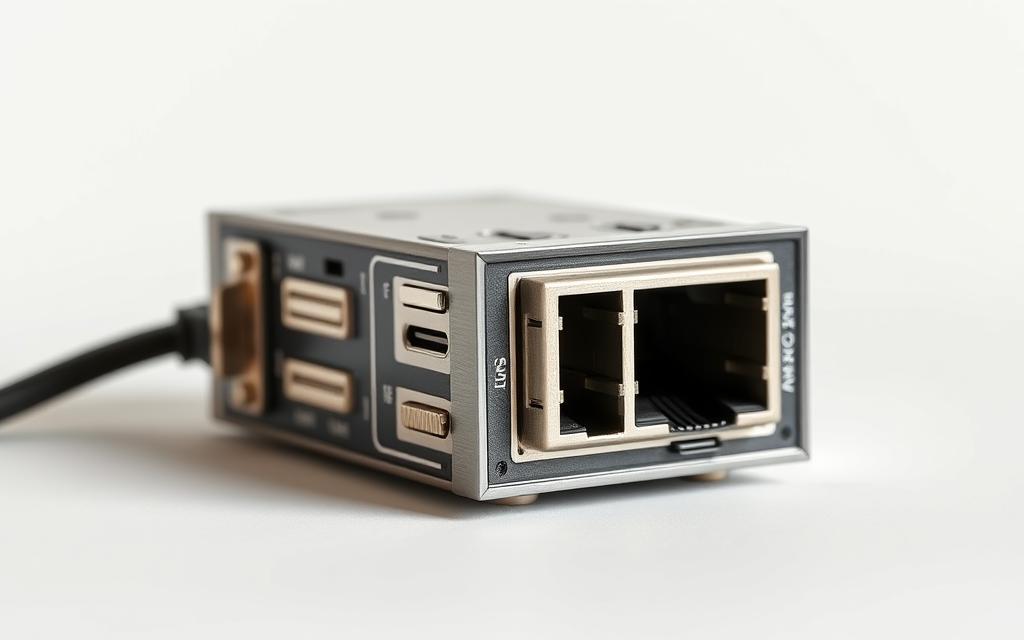
Port Conflict Resolution
Port conflicts occur when multiple applications attempt to use the same port number. To resolve such conflicts, users can configure one of the applications to use a different port number or adjust the operating system’s settings to prioritize the required application.
For instance, if two applications are trying to use the same port, users can change the port number of one application to a different available port, thus resolving the conflict.
Conclusion: Maximizing Connectivity Through Port Knowledge
By mastering computer ports, both physical and network, users can unlock their computer’s full potential. Understanding port functions and capabilities helps optimize computer setups for better connectivity and performance. This knowledge enables users to connect peripherals effectively and troubleshoot network issues. As technology advances, trends like universal connectors and wireless connectivity will continue to evolve.
Applying this understanding will improve digital experiences and solve connectivity challenges more effectively.
FAQ
What is the primary function of a network port?
A network port is a virtual endpoint that allows devices to communicate with each other and exchange data. It is used to identify a specific process or service running on a networked device.
What is the difference between TCP and UDP protocols?
Transmission Control Protocol (TCP) is a connection-oriented protocol that ensures reliable data transfer, whereas User Datagram Protocol (UDP) is a connectionless protocol that prioritizes speed over reliability.
What are the most commonly used port numbers?
Some of the most commonly used port numbers include port 80 for HTTP, port 443 for HTTPS, port 25 for SMTP, and port 22 for SSH.
How do I know which port numbers are used by a specific application?
The Internet Assigned Numbers Authority (IANA) is responsible for maintaining a registry of assigned port numbers. You can check the IANA website for a list of assigned port numbers and their corresponding applications.
What is a dynamic port, and how is it used?
A dynamic port is a temporary port number assigned by the operating system for a specific application or service. It is used to establish a connection between devices and is typically used for short-term or temporary connections.
How can I troubleshoot port-related issues on my desktop?
To troubleshoot port-related issues, you can check the physical connection, ensure that the correct drivers are installed, and verify that the port is not blocked by a firewall or other security software.
What are some best practices for port security?
Some best practices for port security include using firewalls to block unused ports, implementing secure protocols such as HTTPS and SFTP, and regularly updating software and drivers to prevent vulnerabilities.
Can I expand my desktop’s port capabilities?
Yes, you can expand your desktop’s port capabilities using USB hubs, expansion cards, and adapters. These devices allow you to add new ports or convert existing ports to different types.
